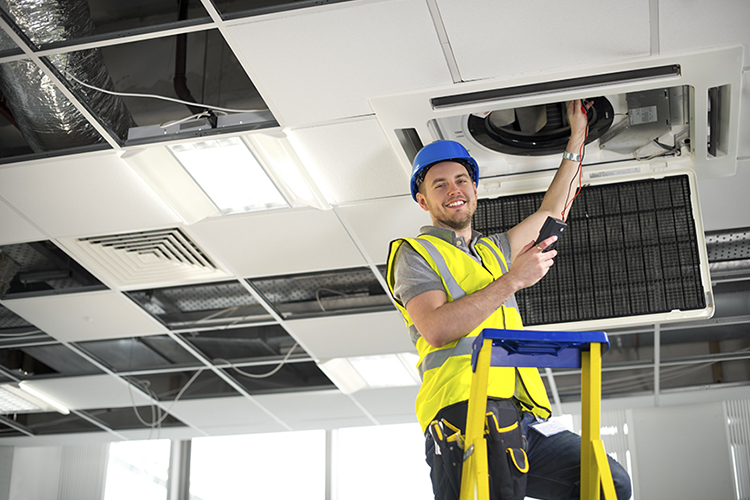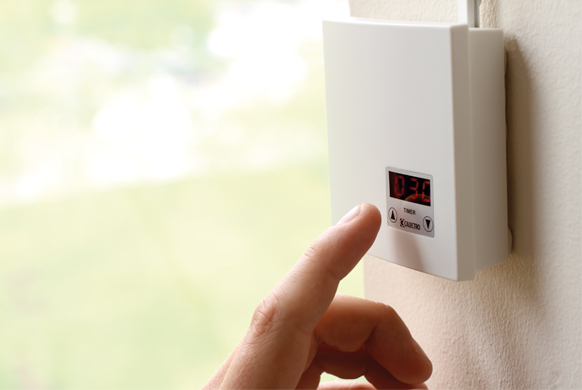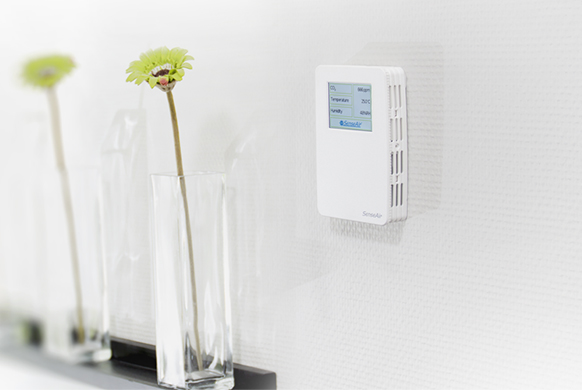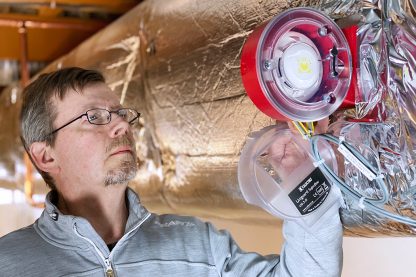How important is good ventilation? Very.
2021-03-03
Have you ever wondered why people have trouble concentrating in meetings? A lot of the time it has more to do with the quality of air they’re breathing than how bored or tired they are. When people gather together for a meeting, the space they are occupying quickly fills with carbon dioxide (CO2). And that may sound harmless enough, as CO2 is simply what we all breathe out. But unless the room is adequately ventilated, this completely odourless gas can cause headaches, lethargy, low productivity and concentration difficulties.

A pleasant indoor climate is better for our health and better for our productivity
But there are other reasons for better ventilation, particularly at certain times of the year. We’ve all been there haven’t we? A colleague turns up for work with a cold or flu and you just know you’re going to get it. But surprisingly, you don’t. And that might simply be because you have a really strong immune system, or it might actually be because your building has a great ventilation system.
A pleasant indoor climate, free from airborne pathogens and allergens, is better for our health and better for our productivity.
What are the three main types of ventilation?
There are three main types of ventilation: manual ventilation, passive infrared (PIR) ventilation and demand controlled ventilation. As you might have already guessed, manual ventilation is as simple as opening a window or manually activating the ventilation when a room feels a bit warm or stuffy. PIR ventilation and demand controlled ventilation, on the other hand, are a little more complicated, so I’ve summarized their main features below.

Passive Infrared (PIR) ventilation is the simplest form of automatic ventilation
Passive infrared (PIR) ventilation is perhaps the simplest form of automatic ventilation because it only has two modes: on or off. The ventilation system is activated by a motion detector unit located in a specific room. As soon as it senses any movement, the unit sends a signal to the building’s ventilation system telling it to start pumping fresh air and, in some cases, even heating or cooling into that particular room.
This means that, regardless of whether you have 15 agitated salespeople crammed into a 10m2 conference room in the middle of July or a sleepy engineer alone in a 200m2 open-plan office space on a cold December morning, the PIR ventilation system will be pumping the same amount of hot or cold air into both rooms. So, although passive infrared ventilation can be a good way to automatically ventilate rooms, it does have its setbacks and limitations.
Reduce your environmental impact and overheads with demand controlled ventilation
Have you ever entered a room straight after a lively crowd of people just vacated it? Stuffy isn’t it? That might be because the ventilation system simply wasn’t aware of the number of people in the room or how they were behaving.
Did you know, for example, that people use up more oxygen when they’re enthusiastic or agitated than when they’re relaxed? And the more oxygen we consume, the more CO2 we produce. And unlike passive infrared ventilation, demand controlled ventilation knows exactly how much fresh air a room needs simply by analysing the CO2 levels. It then automatically increases or decreases the ventilation accordingly.
More advanced demand controlled ventilation systems like the T-SENSE also have a built-in temperature sensor that adjusts the temperature of the air being pumped into the room. Which means you won’t be paying to overheat those salespeople or unnecessarily heat or cool a massive, almost empty room.

As I mentioned at the start of this article, a pleasant indoor climate improves productivity and is beneficial to our overall health and wellbeing. But it can also significantly reduce your environmental impact, not to mention reduce your overheads.
I hope you found this article interesting. For more information, please explore our website, give us a call or drop us an email. We look forward to hearing from you!
Related articles
-
Fundamentals
2021-02-17
Prevent smoke from spreading in facilities by using smoke detectors in ventilation ducts
Read more

